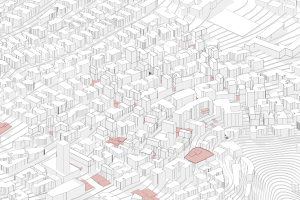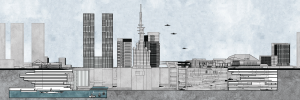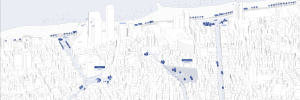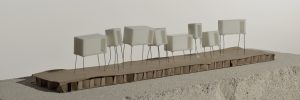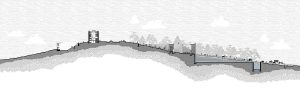Urban passage
The urban commercial street is one of the key components in creating social and cultural vitality in city centres. Since the ground floor is the main interface between the building and the street, the quality of the commercial street generally derives from the accessibility and optimal functioning of the ground floor. However, one of the challenges faced by city centers is the pressure of uses on ground floor spaces, leading to situations where they sometimes fail to meet the demand for commercial areas in the particularly central parts of the city. In such situations, non-standard spatial solutions for adding commercial spaces without altering the street network are required.
An example of a possible solution, which can be implemented in a hilly urban environment, is taking advantage of height differences to add pedestrian-accessible commercial spaces above the ground floor. The project examines the competition for ground floor space in the city center and proposes solutions based on utilizing the city’s topography. The main idea is to connect urban needs with the natural spatial conditions of the location. A clear example of this is the Hadar HaCarmel neighborhood in Haifa, as it is a historic urban center whose commercial streets continue to attract numerous users even today. However, as opposed to the optimal use of commercial ground floors in Hadar, which is also noticeable in their expansion into spaces between residential buildings, the rest of the urban space is in a poor functional state, evidenced by the neglect of residential floors and private spaces between buildings.
One way to improve the neglected state of Hadar is to use the neighborhood’s commercial pull and attempt to integrate commercial spaces within the urban blocs also in their depth, at various levels above the ground floor. The proposed intervention to achieve this goal is to add public infrastructure that weaves between the buildings, within the private lots, as an extension to the existing commercial streets. Due to the height differences between the commercial streets in Hadar, this multi-level infrastructure also creates new connections between parallel commercial streets, thereby increasing not only the surface area of commercial spaces but also the flow of pedestrians between them. The project integrates nature, offers views, and creates a public experience that introduces elements of wandering, observation, and shelter.











